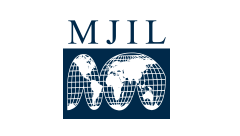Abstract
The ways in which pharmaceutical products are currently developed, manufactured, and distributed fail to meet the needs of developing countries. The recent emergence of new infectious diseases, the associated surge of healthcare nationalism, and the prevalence of substandard and falsified drugs have strengthened substantially the net benefits of augmenting the capacity of developing countries to produce such products locally. Most previous efforts to do so have foundered. The chance of success in the future would be maximized by the adoption of five strategies : (a) clarifying the zones of discretion created by the relevant treaties to ensure that local firms have the freedom to operate; (b) the use of “production triangles” (collaborations among developing-country governments, local firms, and developed-country pharmaceutical firms) to reduce regulatory impediments and to ensure that there exist adequate markets for locally produced products; (c) developing the human capital base in developing countries through initiatives such as an international apprenticeship system; (d) strengthening the legal and administrative apparatus for preventing the dissemination in developing countries of substandard and falsified drugs; and (e) reliance on regional economic communities to create economies of scale and to ensure that medicines are made available to all residents of all developing countries, while also stimulating competition among local firms. These strategies would both save many lives and strengthen the economic and social development of developing and least-developed countries.
Recommended Citation
William Fisher, Ruth L. Okediji & Padmashree G. Sampath,
Fostering Production of Pharmaceutical Products in Developing Countries,
43
Mich. J. Int'l L.
1
(2022).
Available at:
https://repository.law.umich.edu/mjil/vol43/iss1/2
Included in
Health Law and Policy Commons, International Law Commons, Law and Economics Commons, Science and Technology Law Commons

